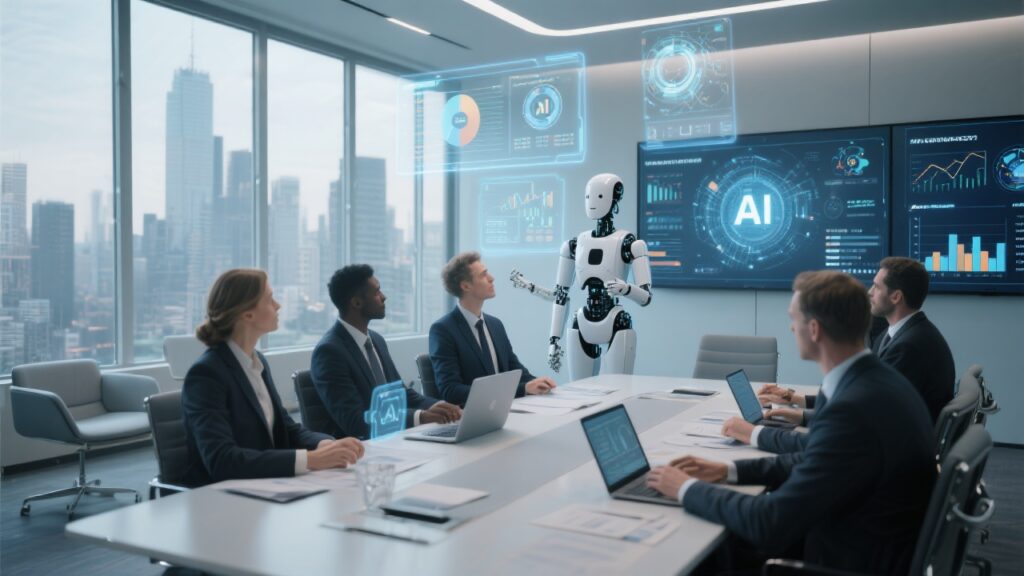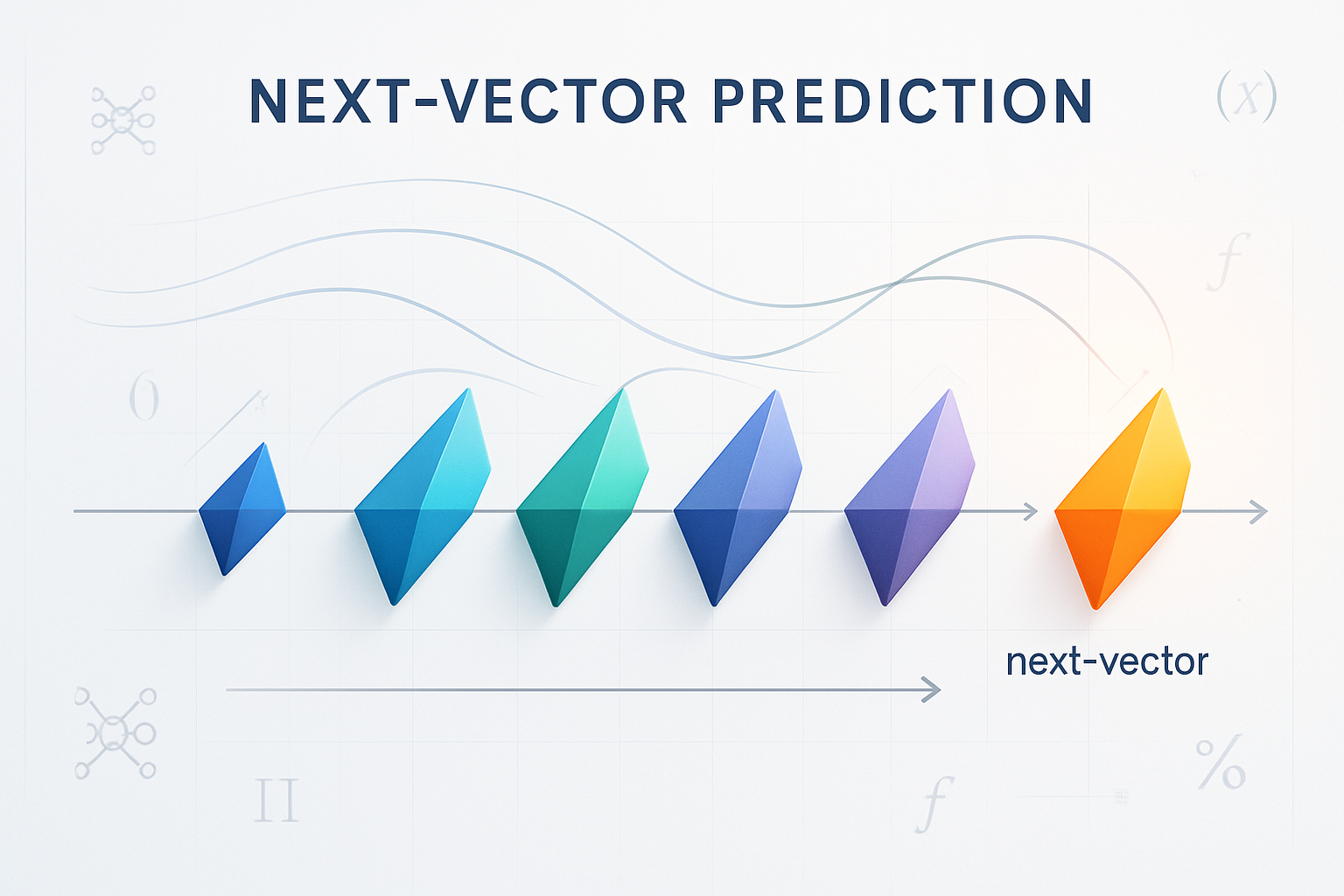TL;DR
The consulting industry faces an unprecedented disruption as Large Language Models like ChatGPT demonstrate the ability to perform complex analytical work in minutes that once required teams of highly-paid consultants working for weeks. This technological leap threatens the traditional consulting pyramid model, where armies of junior analysts support senior partners through labor-intensive research and analysis.
Top-tier firms aren’t sitting idle. McKinsey has deployed thousands of AI agents across its workforce, with over 70% of employees regularly using their internal “Lilli” chatbot. Bain partnered directly with OpenAI, while PwC invested $1 billion in AI capabilities and became OpenAI’s largest corporate customer. These firms report 30%+ time savings on routine tasks, fundamentally altering project timelines and team structures.

The career implications are profound. Traditional consulting pyramids are flattening as AI eliminates much of the grunt work that junior consultants traditionally performed. Instead of 15-person teams, projects now require perhaps 3 humans plus AI agents. This shift forces a reevaluation of hiring practices, skill requirements, and career progression paths within prestigious firms.
Yet human consultants retain irreplaceable value in areas where AI falls short: navigating organizational politics, building trust, providing accountability, and managing the complex human dynamics of organizational change. As Elon Musk wryly observed, CEOs often hire consultants to validate predetermined decisions and provide someone to blame if things go wrong—a role no algorithm can fulfill.
The future points toward augmented consulting rather than replacement. Routine analysis becomes commoditized as “the cost of knowledge moves toward zero,” while wisdom, judgment, and relationship-building become increasingly premium services. The consulting industry isn’t dying—it’s being reborn in the age of AI.
The Ivory Tower Trembles: When Machines Master the Art of Strategic Thinking
For decades, management consulting has represented the pinnacle of white-collar prestige. Firms like McKinsey & Company, Bain & Company, and Boston Consulting Group became synonymous with intellectual rigor, commanding millions from Fortune 500 companies for strategic advice delivered by armies of Ivy League graduates. These organizations built empires on a simple premise: human intelligence, properly organized and methodically applied, could solve any business problem.
That premise now faces its most existential challenge.
The emergence of Large Language Models—particularly OpenAI’s ChatGPT and its increasingly sophisticated successors—has shattered long-held assumptions about the irreplaceable nature of human analytical work. What once required weeks of painstaking research, complex modeling, and iterative refinement can now be accomplished in mere minutes by algorithms that never sleep, never tire, and never demand equity partnerships.
The implications extend far beyond mere efficiency gains. When The Wall Street Journal reported that even McKinsey’s leadership considers AI “existential” to their business model, it sent shockwaves through an industry built on the perceived scarcity of analytical brilliance. The revelation that artificial intelligence can “increasingly do the work done by the firm’s highly paid consultants, often within minutes” represents more than technological progress—it signals a fundamental restructuring of knowledge work itself.
Consider the arithmetic of disruption. A traditional strategy engagement might deploy an engagement manager plus fourteen consultants over several months. Today, that same project could be delivered by an engagement manager, two consultants, and a handful of AI agents. The mathematics are stark: where human labor once scaled linearly with complexity, machine intelligence scales exponentially while costs approach zero.
This isn’t merely about automation replacing manual processes. We’re witnessing the mechanization of thought itself—the core product that consulting firms have sold for over a century. Yet as we’ll explore, the story of AI and consulting isn’t simply one of replacement. It’s a complex narrative of adaptation, evolution, and the enduring value of distinctly human capabilities in an increasingly algorithmic world.

The Anatomy of Disruption: What Happens When Silicon Valley Meets Strategy
The Speed of Thought, Digitized
The consulting industry operates on a fundamental value proposition: transforming raw information into actionable intelligence through human cognitive labor. This process, refined over decades, follows predictable patterns. Junior analysts gather data. Mid-level consultants synthesize findings. Senior partners apply experience and judgment to craft recommendations. The entire apparatus depends on human intellectual horsepower, billable by the hour.
Large Language Models obliterate this careful choreography.
Consider a real-world example that perfectly illustrates the magnitude of change. One technology CEO described mapping out his entire 2025 commercial strategy in just 40 minutes using ChatGPT and LinkedIn data. No consultants. No complex analytical frameworks. Just AI processing raw datasets—tens of thousands of LinkedIn job postings—to generate market insights, salary analyses, and revenue projections complete with visualizations.
This same work traditionally would have consumed weeks of consultant time, requiring specialized skills in data cleaning, statistical analysis, and presentation design. The CEO’s experience represents more than mere efficiency; it demonstrates the commoditization of what consulting firms considered their core intellectual property.
The McKinsey Machine Meets Its Match
The transformation becomes even more striking when examined through the lens of McKinsey’s own internal revolution. The firm has deployed approximately 12,000 AI agents across its operations—roughly one AI assistant for every human employee. These digital workers perform tasks ranging from PowerPoint automation to interview summarization, from strategic logic checking to writing in McKinsey’s signature analytical tone.
The most popular tool? “Lilli,” an AI system that synthesizes McKinsey’s entire century-plus intellectual property catalog. Rather than spending hours searching through case studies and frameworks, consultants now query their artificial colleague: “What do we know about pricing strategies in Southeast Asian telecommunications?” The response arrives instantly, complete with relevant precedents and expert contacts.
Over 70% of McKinsey’s workforce uses Lilli regularly, averaging 17 queries per week per consultant. This isn’t experimental technology—it’s fundamental infrastructure. The firm’s senior partner Kate Smaje captured the stakes perfectly: “Do I think that this is existential for our profession? Yes, I do… but I think it’s an existential good for us.”
Beyond McKinsey: An Industry-Wide Arms Race
The consulting sector’s AI adoption extends far beyond a single firm’s innovation. Bain & Company forged a comprehensive services alliance with OpenAI, becoming both implementer and reseller of ChatGPT Enterprise. The partnership produced immediate results: Coca-Cola engaged Bain and OpenAI to develop AI-driven marketing content, leveraging both text generation and image creation capabilities for advertising campaigns.
Boston Consulting Group took a different approach, rolling out ChatGPT Enterprise to all 33,000 employees and enabling them to create custom AI assistants. The result? Over 18,000 specialized AI tools developed by consultants themselves—everything from client-specific analysis bots to project management assistants.
The Big Four accounting and consulting firms joined the revolution with equal vigor. PwC’s $1 billion AI investment included becoming OpenAI’s first official reseller and largest corporate customer. By mid-2024, PwC reported using generative AI with 950 of its top 1,000 US clients—a penetration rate that speaks to how quickly AI discussions have become standard in business consulting.
The Pyramid Crumbles: How AI Reshapes Consulting’s Career Architecture
The Mathematics of Obsolescence
Traditional consulting operates on a pyramid structure that has remained remarkably stable for decades. A few senior partners at the apex direct numerous managers, who in turn coordinate armies of junior analysts and associates. This model serves dual purposes: it provides leverage for partners (who can bill out multiple subordinates’ time) and creates a training ground where newcomers learn by performing increasingly complex analytical tasks.
Artificial intelligence attacks both foundations simultaneously.
The leverage equation breaks down when AI agents can perform analytical work faster and more accurately than junior consultants. Why maintain a team of fifteen when three humans plus AI can deliver superior results? The training pathway erodes when the fundamental tasks that once taught critical thinking—data analysis, framework application, initial research—become automated.
McKinsey’s own evolution illustrates this transition. While the firm reduced its headcount from approximately 45,000 to 40,000 employees, it simultaneously deployed 12,000 AI agents. The mathematics reveal the new reality: fewer humans, more machines, same (or greater) output capacity.

The Hollowing of the Middle
The impact isn’t evenly distributed across consulting hierarchies. Junior positions face the most immediate threat as AI systems excel at precisely the tasks that define entry-level consulting work: research compilation, basic analysis, initial drafting, and data manipulation. These roles served as apprenticeships where new consultants learned methodology and frameworks. Their elimination creates a skills gap—how do you train the next generation when the training ground disappears?
Meanwhile, senior positions retain value through distinctly human capabilities: client relationship management, complex judgment calls, organizational navigation, and accountability. The middle layers—experienced managers who translate between strategic vision and analytical execution—face an uncertain future as AI systems become capable of bridging that gap directly.
One consultant’s Reddit reflection captures the anxiety: “I’m scared for the traditional consulting model—if AI continues at this pace, entire layers of consulting hierarchy will be redundant… this feels like the rug being pulled out from under us.”
Skills in the Age of Algorithms
The consulting skills premium is rapidly shifting. Where technical analytical abilities once commanded respect, they’re becoming commoditized. As one seasoned practitioner observed: “The cost of ‘knowledge’ is going to zero… but the cost of wisdom will never be higher.”
McKinsey’s CEO Bob Sternfels hints at the new requirements: the firm wants people who are “extremely fast learners” and “can work well in teams.” The emphasis has shifted from specific technical competencies to adaptability and interpersonal effectiveness. If AI handles analysis, consultants succeed by being exceptional coaches, communicators, and collaborators.
This evolution mirrors broader white-collar disruption patterns, but with unique intensity. Consulting firms specifically recruited analytical horsepower—the very capability that AI now provides abundantly. The industry must either discover new forms of human value or face continued compression.
The Client Calculus: Why CEOs Might Still Reach for the Phone
The Psychology of Expensive Advice
Despite AI’s analytical prowess, a fundamental question remains: will clients continue hiring human consultants when algorithms can provide faster, cheaper analysis? The answer lies in understanding why executives hire consultants in the first place—and it’s more complex than pure analytical need.
Elon Musk’s characteristically blunt observation captures one essential dynamic: “Some say the main reason CEOs use consultants is to have an ‘objective third-party’ confirm the decision they were going to make anyway and have someone else to blame if it goes wrong. AI can’t replace that yet.”
This insight reveals consulting’s underappreciated function as executive insurance. When a CEO presents a major strategic shift backed by McKinsey’s analysis, it carries institutional weight that an AI recommendation simply cannot match. Board members and investors understand that respected consulting firms stake their reputations on their advice. An algorithm offers no such guarantee.
The Trust Deficit
Trust represents perhaps the most significant barrier to AI replacement in consulting relationships. Senior executives often develop deep professional relationships with specific consultants or partners who understand their company’s culture, leadership dynamics, and unspoken constraints. These relationships evolve over years, built through shared experiences, confidential conversations, and demonstrated loyalty during difficult periods.
Can artificial intelligence replicate such bonds? Current evidence suggests not. While AI can be programmed to adopt friendly tones and responsive behaviors, it cannot genuinely empathize with executive pressures, understand organizational politics through subtle cues, or provide the emotional support that often accompanies strategic guidance.
A consultant’s value frequently extends beyond analytical insights to include serving as a trusted sounding board, helping executives think through personal as well as professional implications of major decisions. This counseling dimension requires emotional intelligence that remains distinctly human.
Context and Nuance: The AI Blind Spots
Large Language Models excel at processing explicit information but struggle with implicit context. A consulting engagement typically involves dozens of subtle factors that never appear in formal documentation: historical rivalries between departments, leadership personality quirks, informal power structures, employee morale indicators, and cultural sensitivities.
Human consultants absorb these nuances through observation, casual conversations, and organizational intuition developed over years of similar engagements. They might recommend against an otherwise logical reorganization because they sense that two division heads have irreconcilable differences, or suggest delaying a initiative because they recognize that recent layoffs have created excessive anxiety.
AI systems, operating primarily on formal data inputs, miss these critical contextual elements. As BCG’s Martin Reeves noted, generative AI lacks “the nuanced understanding of organizational culture and politics, which are often critical in consulting engagements.” This limitation becomes particularly pronounced in change management scenarios where success depends more on human psychology than analytical logic.

The Implementation Challenge
Even perfect analytical recommendations are worthless without successful execution. Consulting increasingly involves not just strategy development but implementation support—working alongside client teams to ensure that recommendations translate into organizational reality.
This phase requires distinctly human skills: persuading skeptical managers, facilitating difficult conversations, coaching teams through transitions, and maintaining momentum when initial enthusiasm wanes. One experienced consultant estimated that their work breaks down as 25% understanding the client, 25% analyzing problems, 25% developing solutions, and 25% selling and implementing those solutions.
AI might excel at the middle two categories, but it struggles significantly with the first and last. As the same consultant observed: “AI can do a lot of the grunt work in the first three steps but it’ll struggle to sell the solution.”
The Hybrid Future: Augmented Intelligence in Action
Partnership, Not Replacement
Rather than wholesale replacement, the emerging consulting model points toward human-AI collaboration that leverages the strengths of both. Consulting firms are not positioning AI as substitute consultants but as force multipliers that enable human consultants to operate at higher levels of impact and efficiency.
This collaborative approach is already visible in how leading firms deploy AI tools. McKinsey’s consultants use AI agents for research synthesis and document drafts, but humans provide strategic direction, client interaction, and final judgment. Bain’s partnership with OpenAI similarly focuses on AI as an analytical engine that consultants direct and interpret.
The result resembles an orchestra where AI handles the technical precision while humans provide artistic interpretation and emotional resonance. Clients receive faster, more thorough analysis (thanks to AI) combined with experienced judgment and relationship management (from humans).
The Economics of Augmentation
This hybrid model creates interesting economic dynamics. Consulting firms can potentially deliver higher-quality work faster, but traditional billing models based on time and staffing levels become problematic. If AI enables a three-person team to accomplish what previously required fifteen people, how should firms price their services?
Some firms are responding by shifting toward outcome-based contracts. McKinsey reports that approximately 25% of its engagements now tie fees to results achieved rather than time spent. This model aligns incentives around value creation rather than resource consumption and allows firms to capture returns from AI-driven efficiency gains.
New Service Categories
The AI revolution is also creating entirely new consulting opportunities. As businesses struggle to understand and implement AI strategies, they increasingly turn to consulting firms for guidance. McKinsey reports that 40% of its revenue now comes from AI and technology consulting projects—a category that barely existed five years ago.
This trend represents a classic example of creative destruction: while AI threatens traditional consulting services, it simultaneously creates demand for new forms of expertise. Firms that successfully navigate this transition position themselves as guides through the AI transformation rather than victims of it.
The Democratization Question
One intriguing possibility is that AI might democratize access to consulting-level analysis. Historically, only large corporations could afford McKinsey’s services. Smaller businesses relied on less sophisticated alternatives or went without strategic guidance entirely.
AI-powered tools could potentially provide smaller organizations with analysis comparable to traditional consulting at a fraction of the cost. This democratization might expand the overall market for strategic services while pressuring premium pricing at the top end.
However, this scenario assumes that AI analysis alone provides sufficient value—an assumption that our exploration of human consulting advantages calls into question. More likely, we’ll see a bifurcated market where commodity analytical services become broadly accessible while premium human-centered consulting remains expensive but focused on higher-order challenges.
The Broader White-Collar Revolution
Consulting as Canary in the Coal Mine
The consulting industry’s AI transformation offers a preview of disruptions facing many high-skilled professional services. Law firms confront AI systems that can draft contracts and review documents. Financial services firms use AI for research reports and investment analysis. Marketing agencies employ AI for creative content and campaign strategy.
These parallels aren’t coincidental. Professional services industries share common characteristics that make them vulnerable to AI disruption: they sell knowledge work, rely heavily on pattern recognition and synthesis, and traditionally justify high prices through human intellectual labor.
Consulting’s experience suggests that complete replacement is unlikely but significant transformation is inevitable. Professionals who integrate AI capabilities while developing uniquely human skills will thrive. Those who resist technological change or remain limited to routine knowledge work face displacement.
The Skills Premium Shift
Across professional services, the value of pure analytical ability is declining while premiums for judgment, creativity, and relationship management increase. This shift requires professionals to evolve their value propositions from information processors to strategic partners.
The transition isn’t uniform across experience levels. Entry-level positions that primarily involve routine analysis face the greatest threat. Senior roles that depend on wisdom, networks, and accountability maintain stronger defenses. Middle-level positions must quickly evolve toward higher-value activities or risk compression between AI capabilities below and human expertise above.
Economic and Social Implications
The consulting transformation has broader implications for career mobility and economic opportunity. Consulting firms have traditionally served as training grounds for future business leaders, providing analytical skills and business exposure that proved valuable across industries.
If AI reduces entry-level consulting opportunities, alternative pathways for developing business expertise become crucial. Companies might need to create new apprenticeship programs or modify MBA curricula to maintain the pipeline of trained business professionals.
The concentration of benefits also raises questions. If AI enables consulting firms to deliver equivalent services with fewer employees, will clients capture savings through lower fees, or will firms retain benefits as improved margins? Market competition suggests benefits will ultimately be shared, but the transition period could create significant wealth redistribution effects.
Evolution’s Next Chapter: Consulting in the AI Era
The Redefinition of Value
The consulting industry’s relationship with artificial intelligence represents more than technological adoption—it embodies a fundamental redefinition of professional value in the knowledge economy. Where consultants once sold analytical horsepower, they increasingly offer judgment, relationship management, and implementation expertise that remain distinctly human.
This evolution parallels historical transformations in other industries. When calculators became ubiquitous, mathematics teachers didn’t disappear—they stopped teaching arithmetic and focused on conceptual understanding. When word processors replaced typewriters, writers didn’t vanish—they concentrated on creativity rather than mechanical transcription.
Similarly, consulting’s future lies not in competing with AI’s analytical capabilities but in leveraging those capabilities to address more complex, nuanced challenges that require human insight and interpersonal skill.
The Institutional Response
Major consulting firms are demonstrating remarkable adaptability in their AI integration efforts. Rather than viewing artificial intelligence as an existential threat, leading firms are treating it as existential infrastructure—as fundamental to future operations as computers or telecommunications.
McKinsey’s deployment of 12,000 AI agents, Bain’s comprehensive OpenAI partnership, and PwC’s billion-dollar AI investment represent strategic bets that early adoption and deep integration will create competitive advantages rather than mere efficiency gains. These firms are essentially racing to become the most AI-enhanced versions of themselves before competitors or new entrants can capture market share.
The speed and scale of this institutional response suggest confidence that augmented consulting models will prove more valuable than either pure human consulting or pure AI analysis. Time will test this hypothesis, but early indicators support optimism about human-AI collaboration in professional services.
Market Structure Evolution
The consulting industry’s structure will likely evolve significantly as AI capabilities mature. Traditional hierarchical models built around labor intensity may give way to flatter organizations where smaller teams of highly skilled professionals manage portfolios of AI tools and focus on client relationship and implementation challenges.
This restructuring could create opportunities for boutique firms and independent consultants who previously couldn’t compete with large firms’ research capabilities. Armed with AI tools, a small team might deliver analysis comparable to traditional consulting armies while maintaining cost advantages and client intimacy.
Conversely, the largest firms might find their scale advantages diminished if AI democratizes analytical capabilities. Their survival will depend on successfully transitioning toward relationship management, complex problem-solving, and implementation services where scale still provides value.
The Human Element Endures
Perhaps the most striking conclusion from examining AI’s impact on consulting is how clearly it illuminates the enduring value of distinctly human capabilities. In an age of algorithmic analysis, qualities like empathy, trust-building, creative problem-solving, and accountability become more precious rather than less.
This insight extends beyond consulting to broader questions about human work in an AI-dominated economy. Rather than replacing human intelligence, artificial intelligence may ultimately clarify which aspects of human intelligence are most irreplaceable.
The consulting executives who hire consultants for “someone to blame” or to provide “objective third-party validation” reveal psychological and institutional needs that transcend analytical capability. These needs reflect fundamental aspects of human nature and organizational behavior that are unlikely to disappear regardless of technological advancement.
Conclusion: The Consulting Renaissance
The question of whether ChatGPT and other Large Language Models will “kill” consulting firms like McKinsey and Bain requires a more nuanced answer than simple yes or no. These technologies are certainly killing the traditional consulting model—the era of large teams spending months on analytical work that AI can now complete in minutes is ending.
But from this disruption emerges something potentially more valuable: consulting reimagined around distinctly human strengths and enhanced by artificial intelligence capabilities. The future belongs to firms that can seamlessly blend algorithmic analysis with human judgment, relationship management, and implementation expertise.
The consulting industry’s rapid AI adoption suggests that leading firms understand this transition intuitively. Rather than fighting technological change, they’re embracing it so enthusiastically that they risk being accused of over-investment. This aggressive adaptation likely positions them well for an augmented future where human consultants and AI systems collaborate rather than compete.
For individual consultants, the message is clear: develop skills that complement rather than compete with artificial intelligence. Become exceptional at relationship building, creative problem-solving, change management, and strategic implementation. Use AI tools to enhance your analytical capabilities rather than viewing them as threats to your expertise.
For clients, the AI revolution in consulting promises faster analysis, deeper insights, and potentially lower costs for routine strategic work. However, the most complex organizational challenges will still require human guidance, empathy, and accountability that no algorithm can provide.
The consulting industry’s encounter with artificial intelligence thus represents neither death nor mere continuity—it embodies transformation. The firms and professionals who successfully navigate this transformation will emerge stronger, more valuable, and more focused on the irreplaceable human elements of strategic advisory work.
In the end, ChatGPT and its successors won’t kill consulting. They’ll simply force consulting to evolve into its most essential form: the uniquely human art of guiding organizations through uncertainty, change, and complexity. That’s a service that will remain valuable as long as businesses face difficult decisions and human nature craves wisdom alongside intelligence.
The revolution has begun. The survivors will be those who embrace both the power of artificial intelligence and the enduring value of human insight. In this new landscape, the most successful consultants won’t be those who can think like machines—they’ll be those who can think with machines while remaining unmistakably, irreplaceably human.










